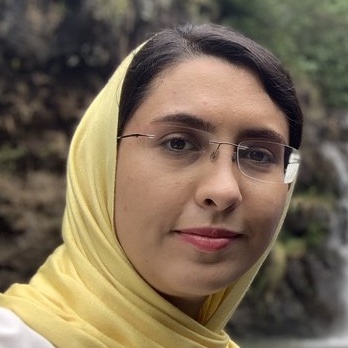
At Caltech, I lead a small research group consisting of postdocs, visiting graduate students, and summer under-graduate students. We are interested in understanding the formation and evolution of galaxies across cosmic time, applying observations, simulations, and machine learning methods.
Postdocs

Marziye works on spectroscopic aspects of (quiescent) galaxies using simulations and observations and machine learning techniques. In parallel, she is designing a tool to photometer imaging data from ground and space-based observatories from UV to infrared wavelengths.
Yu-Heng will be working on HST slit-less grism spectroscopy of high redshift low-luminosity quasars. The goal is to confirm their redshifts (thus setting important constraints on the faint-end of the quasar luminosity function) and probe their environment.
I will soon be hiring a postdoc to work on our approved JWST cycle 2 NIRSpec/IFU program to study ALPINE galaxies. Let me know if you are interested!
Past Postdocs:
- None so far...
(Visiting) Graduate Students
Patrizia (a student at University Padova, Italy) is studying together with Paolo Cassata (Univ. Padova), Mirka Dessauges-Zavadsky (Univ. Geneva), and myself the properties of star forming clumps in ALPINE galaxies by combining ALMA and JWST imaging from COSMOS-Web.
Caltech/IPAC offers competitive visiting graduate student fellowships. Apply and get funding to study in my group for 6 months (usually from February to August).
Past Visiting Graduate Students:
- Rebecca Minsley (co-mentoring, 2021 - present, Bates College Arizona) uses optical spectroscopic observation with the STIS instrument to probe the reddening due to dust in local galaxies. The novel technique uses the broad (non-nebular) Wolf-Rayet Helium emission lines, which we verified using a pilot sample of galaxies in Leitherer, Lee, Faisst (2019).
- Brittany Vanderhoof (co-mentoring, 2020 - 2022, Rochester Institute of Technology) is studying the interstellar medium properties of galaxies at a redshift of z=4.5 by a joint analysis of their optical [OII] emission and far-infrared properties observed with ALMA.
Vanderhoof et al. (2022) - Yoshinobu Fudamoto (co-mentored, 2019, University of Geneva) studied the fraction of dust obscured star formation in galaxies at redshifts z=4-5 from the ALPINE survey. is studying the interstellar medium properties of galaxies at a redshift of z=4.5 by a joint analysis of their optical [OII] emission and far-infrared properties observed with ALMA.
Fudamoto et al. (2020) - Rebecca Larson (co-mentored, 2018, Univ. Texas) used the fact that galaxies cluster differently to estimate the redshift of galaxy samples. "Clustering redshifts" provide a complementary method to photometric redshifts and will be useful to the next generation of wide-field surveys carried out with Roman or Euclid. Publication in Preparation
(Summer) Undergraduate Students
For a period of 10 weeks, Edward will study how SPHEREx will constrain the dust properties of low-redshift galaxies through their PAH emission.
Past Undergraduate Students:
- Teresa Huang (2021, Caltech, SURF) is using computer vision machine learning techniques to identify stars on images. The identification of stars is important to cross-align images taken by different facilities, remove contamination from galaxy samples, and measure stellar streams through their propert motion on the sky. These concepts will play a major role in wide-field surveys undertaken by the next generation of telescopes.
- Ishita Korde (2019, UC Riverside, Computer Science, FIELDS) wrote a program to measure emission lines from spectra taken in the COSMOS field. A large catalog of complete line measurements can be used for the calibration of simulations that predict the numbers of such galaxies to be observed with the Euclid and the Roman space telescope.
- Thomas Venville (2019, Univ. Swinburne / Caltech, SURF) build a framework to identify transient and variable sources with machine learning.
- Catalina Miritescu (2016, Caltech, SURF) studied the dependence of strong optical [OIII] emission and the escape fraction of UV photons in galaxies at redshifts of z=1. For this, she measured [OII] and [OIII] emission for galaxies in the COSMOS field. High [OIII]/[OII] ratios characterize galaxies in the early Universe - the study of similar galaxies at low redshifts can therefore give us clues on the physics of the first galaxies.
- Ivana Barisic (2015, Univ. of Zagreb / Caltech, SURF) studied the dust properties of galaxies at z=6 with ALMA and the Hubble Space Telescope.
Barisic et al. (2017)